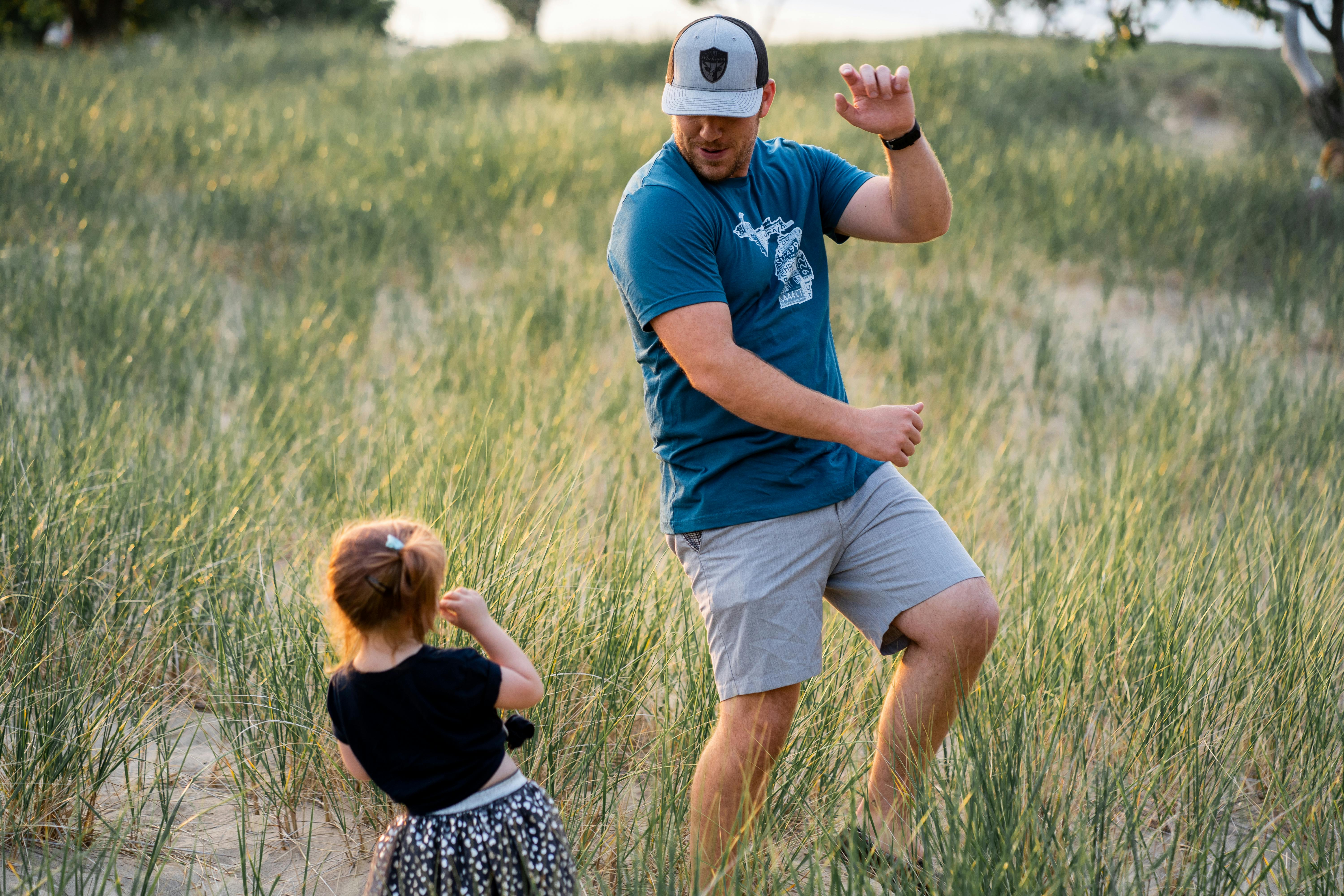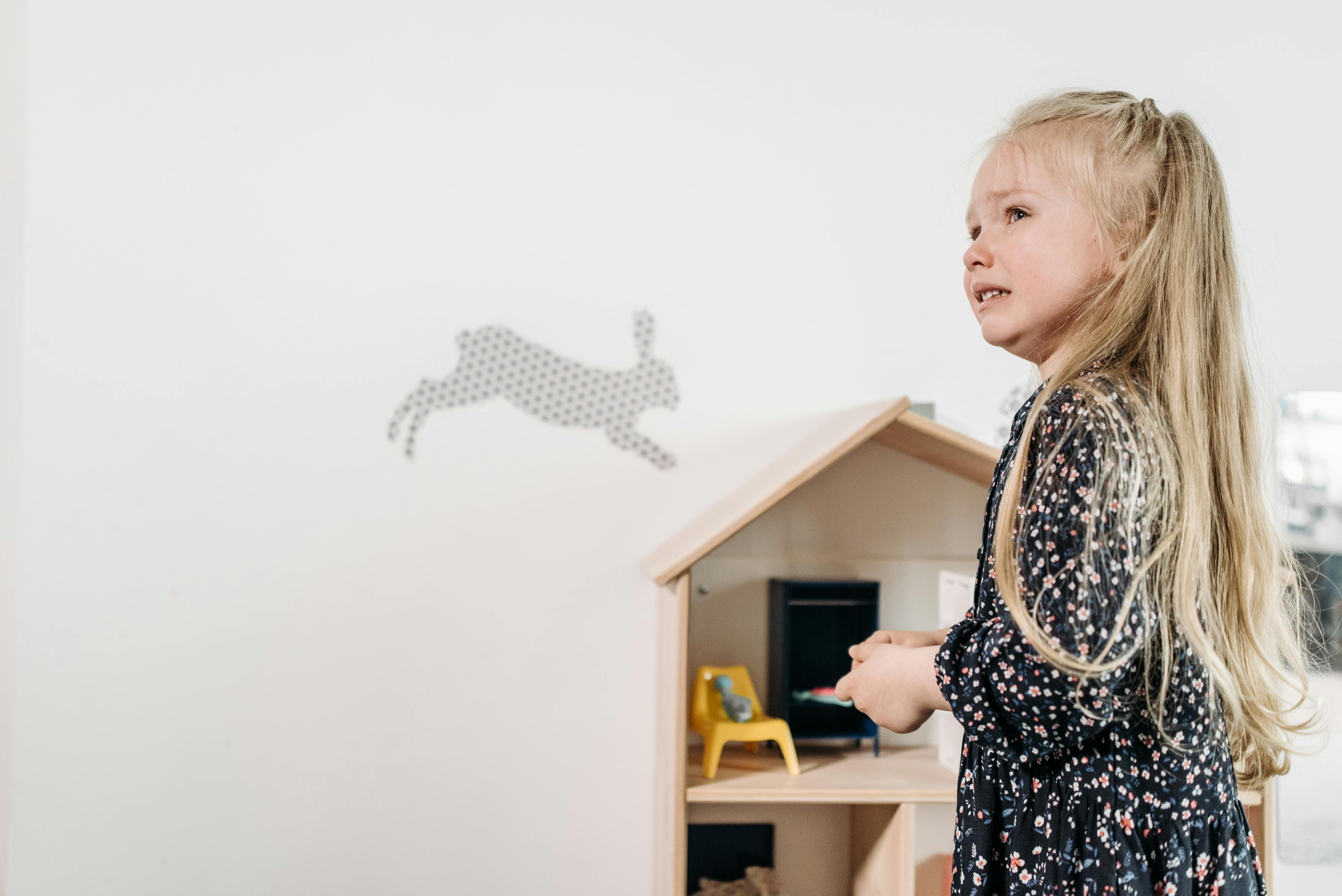Have you ever stumbled upon a puzzle that seems deceptively simple at first glance but ends up boggling your mind? The image above asks a simple question: “Can you find the black dot?” At first, it seems straightforward—after all, it’s just a grid of white dots connected by intersecting lines. But as you stare at the image, you may find yourself second-guessing what you see.
Common Mistakes: Why Finding the Black Dot Is Tricky

Many people who attempt to solve this puzzle report wildly different answers. Some are convinced they’ve spotted a black dot or even multiple dots, while others insist there are none. So why does this happen?
- The Nature of Optical Illusions
This puzzle leverages a phenomenon called the Hermann Grid Illusion. At the intersections of the white lines, some viewers perceive black dots that seem to “blink” in and out of existence as their eyes move. These phantom dots aren’t actually present; they’re an optical illusion caused by the way our eyes and brain process contrast and brightness. - Human Vision Limitations
Our eyes are excellent tools, but they have limitations. When observing this grid, the retina’s ganglion cells process light and dark areas differently. This processing often leads to the perception of small black dots at intersections, which disappear when you focus directly on them. - Attention and Movement
Another mistake is assuming the black dots are stationary. In reality, they seem to move or shift as you try to lock your focus. This creates the illusion that you’re “chasing” the dots, making the puzzle even more frustrating. - Overthinking the Problem
Many people spend so much time trying to find hidden patterns or complex solutions that they miss the key point of the illusion—it’s not about finding the dots, but understanding why they appear in the first place.
Does this sound familiar? Don’t worry. Now that we know why the black dot seems so elusive, let’s dive into solving the puzzle step by step.
Step-by-Step Guide to Understanding the Puzzle
Let’s break this illusion down so you can fully grasp what’s happening and why it’s so perplexing.
Step 1: Take a Moment to Observe
Start by staring at the image calmly. Avoid darting your eyes from intersection to intersection. At first, you may feel confident that you see black dots appearing in some places, only for them to vanish when you look directly at those spots.
Step 2: Focus on a Single Intersection
Try fixing your gaze on a single point where the white lines cross. Do you notice how the black dot disappears when you focus directly on it? This is because your central vision is sharp enough to override the illusion, but your peripheral vision is still affected by the contrast between the white dots and the black background.
Step 3: Move Your Eyes Slowly
Now, let your eyes wander slowly across the grid. You might see the black dots appear briefly as your focus shifts. This happens because the illusion relies on your brain filling in details from your peripheral vision, where light and dark contrasts can create misleading signals.
Step 4: Understand the Science
The illusion works due to something called lateral inhibition, a process where the retina’s light-sensitive cells suppress the activity of neighboring cells. This enhances contrast and edges, making the grid lines and dots seem sharper. However, this same process tricks your brain into “seeing” black dots at intersections where there’s actually nothing.
Step 5: Accept the Truth

Here’s the answer: there are no black dots. The illusion creates the appearance of them, but if you study the image closely, you’ll realize that all the dots are white. The black dots are just a figment of your perception, designed to trick your eyes and brain into seeing what isn’t there.
Share Your Thoughts: What Did You See?
Now that you understand the puzzle, we’d love to hear from you. Did you see the black dots? How long did it take you to figure out the illusion? Share your experience in the comments below! Everyone’s perception is unique, and it’s always fascinating to compare notes with others.
Don’t forget to share this puzzle with your friends and family. See if they can solve it, or better yet, challenge them to explain how the illusion works. It’s a great way to spark conversation and test everyone’s visual perception.
Conclusion: Keep Your Mind Sharp with More Puzzles
Optical illusions like this one aren’t just entertaining—they also help us better understand how our brains process visual information. By exploring puzzles like these, we can sharpen our observation skills, enhance our logical thinking, and even learn a little more about the quirks of human perception.
So, can you find the black dot? The answer, as we’ve seen, is both simple and profound: there isn’t one. But the process of discovering this answer teaches us to approach challenges with curiosity and an open mind.
If you enjoyed this puzzle, why not try more? There’s a world of illusions, riddles, and logic games out there waiting to challenge your brain. Happy puzzling!
My Husband’s Best Friend Came to Our Family Dinner – After He Left, Our 7-Year-Old Daughter Stopped Talking for Months

When my husband’s best friend, Brian, came over for a casual family dinner, I never imagined it would change our lives forever. But after that night, our daughter stopped speaking, and as the silence stretched on, we uncovered a devastating betrayal that shattered her innocence.
I still don’t know how to make sense of everything that happened. Maybe if I write it down, it’ll help. Maybe someone will understand or tell me I’m not crazy for feeling like this.

A thoughtful woman | Source: Pexels
It started with a family dinner. Tom’s best friend Brian was coming over, as he had so many times before. Brian and Tom had been inseparable since middle school, practically brothers.
Brian was around for every big and small moment in our lives. If something needed fixing, he was there with his toolbox. If we had a BBQ, he was there with a cooler and a smile. He was more than a friend; he was family.

A happy man | Source: Pexels
Emily, our daughter, adored him. She’d race to the door every time he came over, practically bouncing with excitement. “Brian! Brian!” she’d shout, wrapping her little arms around his legs, her eyes wide and bright. He’d always laugh and scoop her up.
“Hey, kiddo,” he’d say, grinning, giving her a playful noogie. “How’s my favorite girl?”

A man playing with a little girl | Source: Pexels
That night felt no different—just pizza, laughter, and catching up. Tom was running late from work, so I called Brian to pick up the food. He came in with a big grin, balancing two pizza boxes in one hand and holding a small gift bag with the other.
“Look what Uncle Brian brought,” he said, handing the bag to Emily. Inside was a small stuffed puppy. Emily’s eyes lit up.
“Thank you!” she squealed, hugging the toy. “I love him!”

A girl with a plush toy | Source: Pexels
Brian chuckled, ruffling her hair. “I thought you might, kiddo.”
We settled in for dinner, chatting about little things. Brian cracked his usual jokes, making us all laugh. Emily was glued to his side, asking him about everything under the sun.
“Why do dogs have tails?”
“To wag when they’re happy,” he answered with a smile.
“Why don’t cats have big tails like dogs?”

A man and a little girl blowing at a candle on a cupcake | Source: Pexels
“Oh, that’s ’cause cats are sneaky. They don’t need ‘em as much,” he replied, making Emily giggle.
As we were finishing up, I realized we were out of drinks. Tom still hadn’t arrived, so I turned to Brian.
“Do you mind staying with Emily for a few minutes while I run to the store?”
Brian shrugged, waving a hand. “Of course not. Go on, we’ll be just fine.”

A smiling man on a couch | Source: Freepik
“Thanks. I’ll be back in ten minutes,” I said, grabbing my keys. I knew Emily was in good hands. Brian was practically family, after all.
When I got back, I saw Brian by the door, looking… different. He wasn’t his usual self—he seemed tense, almost… nervous. He barely looked at me as he grabbed his coat.
“Everything alright?” I asked, frowning.
“Yeah, yeah,” he said quickly, not meeting my eyes. “I just—uh, something came up. Gotta run. Tell Tom I’ll catch him later.”

A sad man | Source: Pexels
Then he was out the door, barely waiting for me to say goodbye. I felt a strange chill but brushed it off. It was Brian. He’d never given me a reason to doubt him before.
After that night, everything changed. Emily, my bubbly, talkative daughter, went silent.
At first, I didn’t think too much of it. Kids have off days. Maybe she was tired or upset that Brian left so suddenly. But by the next day, she still wasn’t talking.

A sad girl | Source: Pexels
She went through breakfast without a word, not even looking up when I put her favorite waffles on the table. When I tried to draw her out with a story or a question, she just shrugged or looked down, her fingers tracing little circles on her plate.
“Emily, honey,” I asked gently, “are you mad about something? Did something happen with Brian?”
She just looked at me, her big, sad eyes filling with tears, then shook her head and went to her room.

A crying girl | Source: Pexels
Tom tried talking to her, too. “Em, sweetie, you know you can tell Daddy anything, right?” he coaxed, crouching down to her eye level.
Emily just nodded, her lips pressed tightly together. She clutched the little stuffed puppy Brian had given her like it was the only thing holding her together. I tried to brush it off as a phase, or maybe a delayed reaction to a bad dream. But a mother knows when something’s really wrong.

A little girl crying | Source: Pexels
By the third day, I knew it wasn’t just a phase. My heart ached as I watched my little girl, once so full of life, withdraw into herself. She wouldn’t go to the park. She didn’t want to color or play. When she spoke, it was short, single words—”yes,” “no,” “fine”—like she was afraid to say anything more.
Tom and I began to worry something terrible had happened. We took her to the pediatrician, who ran every test, checked her hearing, even her vision.

A doctor examining a girl | Source: Pexels
Everything was normal. Then we went to a child therapist, but after several sessions, the therapist pulled us aside and told us they couldn’t figure out why Emily had retreated into silence.
Weeks turned into months, and Emily still hadn’t returned to her old self. She went through the motions but never spoke more than she had to. Tom and I tried every gentle way we knew to get her to open up, but it was like she’d locked herself in a place we couldn’t reach. Our lives felt wrapped in a strange, unspoken grief.

A sad child at school | Source: Pexels
And then, one morning, after five long months, Emily finally broke her silence. I was buckling her into her car seat, about to take her to school, when she looked up at me, her eyes wide and scared.
“Will you leave me there forever?” she whispered, barely above a breath.
Her words hit me like a punch to the chest. “What? Emily, why would you say that?” I asked, my voice breaking.

A shocked woman | Source: Freepik
Her lower lip quivered. “Brian said… he said I’m not really yours. He said you’re going to leave me like my real parents did.”
My heart shattered. I could feel the blood drain from my face as I struggled to hold back tears. Tom and I had always planned to tell Emily she was adopted, but when she was old enough to understand it in a safe, loving way.

A sad, thoughtful woman | Source: Pexels
“Emily, listen to me,” I said, trying to steady my voice. “You are ours. We love you more than anything. Brian was wrong to say those things. We would never leave you. Ever.”
She looked at me, her eyes searching mine for something to hold on to, then nodded slowly. Her shoulders relaxed a little, but I could still see the doubt lingering in her face. That night, when Tom came home, I told him everything. He was furious, hurt beyond words, but we were both more focused on Emily’s recovery.

A woman hugging her daughter | Source: Pexels
After that, Emily began talking again, slowly at first, but I could see she was still scared. I tried reaching out to Brian. He didn’t answer. Every call, every text went unanswered. Months went by, and it felt like Brian had vanished from our lives without a trace. Tom wanted to confront him in person, but we didn’t even know where he was anymore.
Then, one evening, out of the blue, I got a message from him. “Can we meet? I need to explain.”

A woman looking at her phone | Source: Pexels
Against Tom’s better judgment, I agreed to meet him. I needed answers. When I saw Brian, he looked like he’d been through hell—tired, thinner, his face hollowed out by something I didn’t recognize.
“I’m sorry,” he said as soon as we sat down, his voice barely more than a whisper. “I never meant to hurt her… or you.”
“Then why, Brian?” I asked, my voice edged with the months of anger and confusion. “Why would you tell her that?”

A man and a woman having a serious talk | Source: Freepik
He took a shaky breath. “I found out I was adopted that day,” he said, looking down. “Right before I came over. My parents never told me. My whole life, I thought they were my real parents. And then, just like that, I find out they’re not. It broke me.”
I stared at him, speechless. “So you decided to hurt Emily? To throw that on a child?”

An angry woman | Source: Pexels
His face crumpled. “I wasn’t thinking straight. She was just so innocent, so trusting. I don’t know why I said it. I was… I was lost in my own pain, and I thought maybe… I don’t know, maybe she should know the truth before it’s too late.”
I shook my head, hardly able to look at him. “Brian, she’s seven. She’s just a child. That was our truth to tell her when the time was right, not yours.”

A man covering his face with his hands | Source: Pexels
“I know. I’ve been punishing myself for it every day since. I don’t expect you to forgive me, but I just… I needed you to know. I’m sorry.”
I left the meeting feeling hollow, burdened with a sadness I couldn’t shake. Brian wasn’t evil. He was broken, and his pain had shattered the innocent trust my daughter had in the world. But it didn’t change the fact that we had to pick up the pieces.

A sad woman deep in thought | Source: Pexels
Since that day, he hasn’t reached out again. Emily is doing better, but there’s still a part of her that hesitates, that questions.
If you liked this story, consider checking out this one: Life sure has a way of surprising you when you least expect it. Just when you think everything’s going according to plan, something or someone comes along and flips your whole world upside down. But sometimes, those moments that seem like the end of everything turn out to be just the beginning.
This work is inspired by real events and people, but it has been fictionalized for creative purposes. Names, characters, and details have been changed to protect privacy and enhance the narrative. Any resemblance to actual persons, living or dead, or actual events is purely coincidental and not intended by the author.
The author and publisher make no claims to the accuracy of events or the portrayal of characters and are not liable for any misinterpretation. This story is provided “as is,” and any opinions expressed are those of the characters and do not reflect the views of the author or publisher.



Leave a Reply